About a year ago, my friend called me to tell me about his latest impluse purchase: a Komplete Kontrol S88 keyboard and Native Instruments Kontakt samples.
“Dude, you need to get these,” he said, as he tickled the beautifully balanced ivory keys, “I’ve heard you play before—imagine if you could actually record your music and release it?”
I was inspired. For years, I’d wander over to the family piano, play something that would perfectly capture how I felt at that precise moment, and forget it within a couple of days. I can’t express how sad it is to have something to say, but not be able to (1) remember it, or (2) share it with other people.
Fast-forward to now—I’ve just released my first ever single on Spotify, iTunes, Amazon, Google Play, the whole enchilada. It’s a piano waltz entitled “Lily’s Waltz” and here’s how I went from nearly zero experience in Logic Pro X to creating it.
The Inspiration
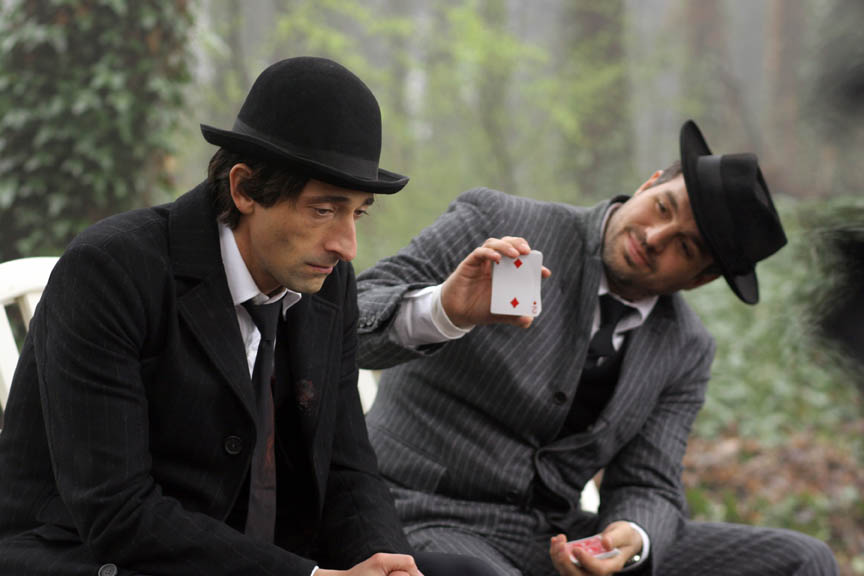 This song was actually inspired by another beautiful piece I heard in the movie The Brothers Bloom. If you haven’t seen it, you must. It’s a delightful film with rich and quirky characters and a fun, offbeat plot.
This song was actually inspired by another beautiful piece I heard in the movie The Brothers Bloom. If you haven’t seen it, you must. It’s a delightful film with rich and quirky characters and a fun, offbeat plot.
The piece I heard in the film was called “Penelope’s Theme,”— a stunning little waltz with idiosyncratic innocence and a hauntingly simple melody.
A few weeks later, I sat down at the piano and fiddled around (no musical pun intended). I played a couple of different things that were pretty forgettable until I happened upon a musical idea that made me smile.
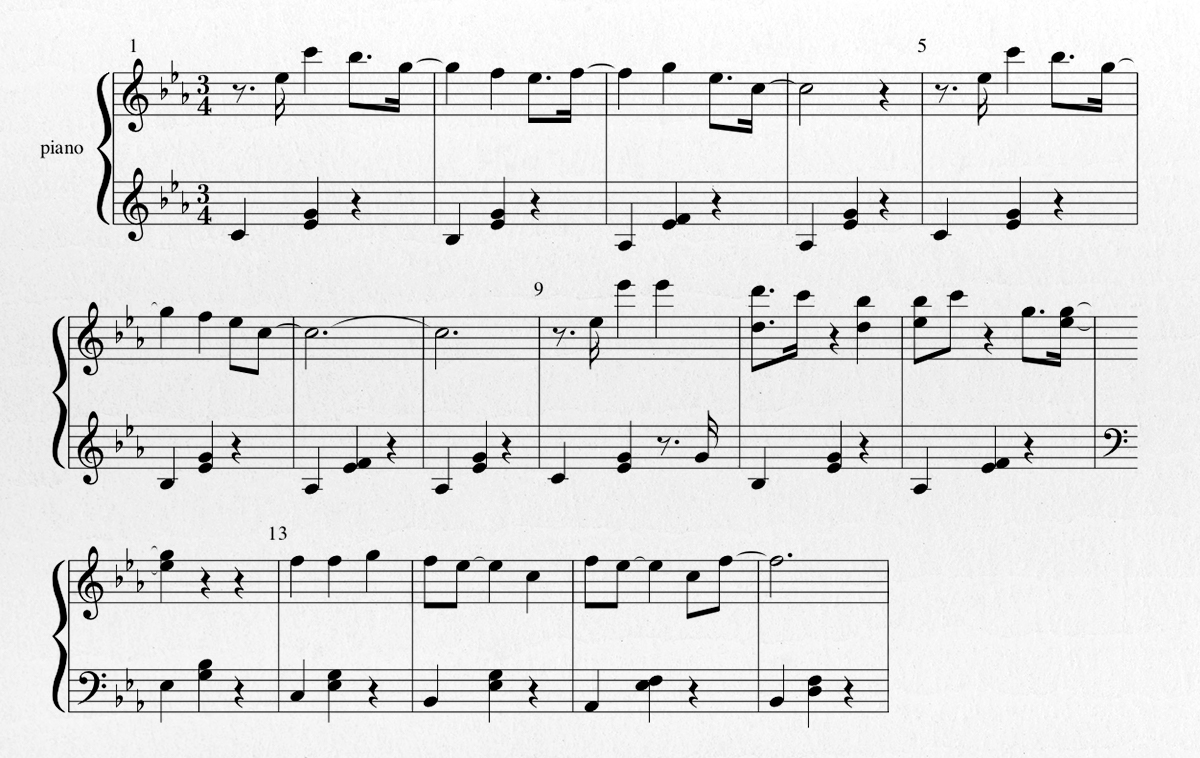
Honestly, it just made me feel right. It was everything the melody needed to be and nothing more. It was exactly what my soul wanted to say at that moment.
A somewhat off-kilter human melody set against the steady backdrop of an incomplete waltz.
The Instrument
After finding my melody, I had to pick an instrument.
I considered Spitfire Audio’s Gwilym Simcock – Felt Piano sound (an absolutely stunning instrument, btw, definitely check it out), but it just felt a little too soft and muddled for this piece. I needed something a bit more present and dynamic.
For that reason, I selected Native Instrument’s The Gentleman—an instrument sample from a vintage upright built in 1908.
But I wanted it to feel a little bit more organic, so I made some adjustments:
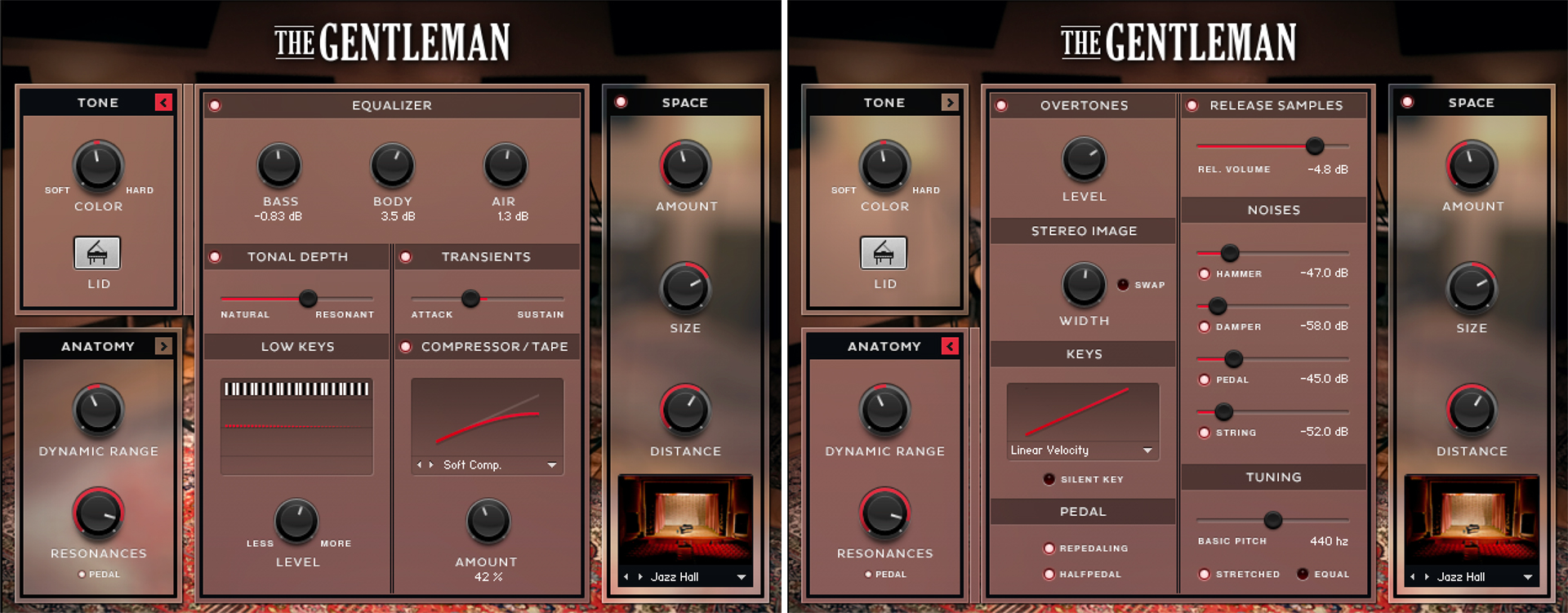
Now that the instrument felt right—sorry, felt piano joke—it was time to hit record… or was it?
The Obstacle
I had a melody, sure, but that’s all I had.
I tried exploring different versions of the theme, but, I was plagued with self-doubt.
“This is too simple,” I’d say one day. Then another, “Blah, this isn’t any good. No one will like this.”
This continued for months. Every time I’d find the courage to sit down at my keyboard in the hopes of ‘cracking the code,’ I’d end up running away like a bashful middle-schooler trying to ask a girl out for the first time. “Tomorrow,” I’d say, “I’ll do it tomorrow.”
Part of my problem was technical. I’d set the project tempo in Logic to about 100bpm (beats per minute), but the song felt wrong being played in even tempo—it needed a bit of a lilt, some give and take.
I didn’t really know what I was doing, so I turned off the metronome, hit record, and played it the way I felt it should be played. The result was something that was pretty much uneditable, and therefore unusable. I’d also play for 15-20 minutes at a time—recording everything ‘just in case’ I had a brilliant accident that I didn’t want to lose. This made my task of cleaning up the piece even more overwhelming.

The other part of my problem was personal. Frankly, I’ve always thought that my music was too simple to be good. I come from a family of musicians. My mother, Julie Lavender Le Doux, is a jazz singer/songwriter with an amazing voice and an ear for new musical rhythms and melodies. My brother, Christian Le Doux, is a wonderful composer who fearlessly and effortlessly weaves complex harmonies into his music. In fact, whenever I’d finish sharing a song idea with my bro, I’d look up from the piano and he’d be doing something else. After a moment of silence, he’d snap out of it and say something like, “Oh, um, yeah, that’s good. Can I play now?”
Not great for self-esteem.
The Solution
So the solution to the technical problem was actually quite simple. It involved determining my creative process.
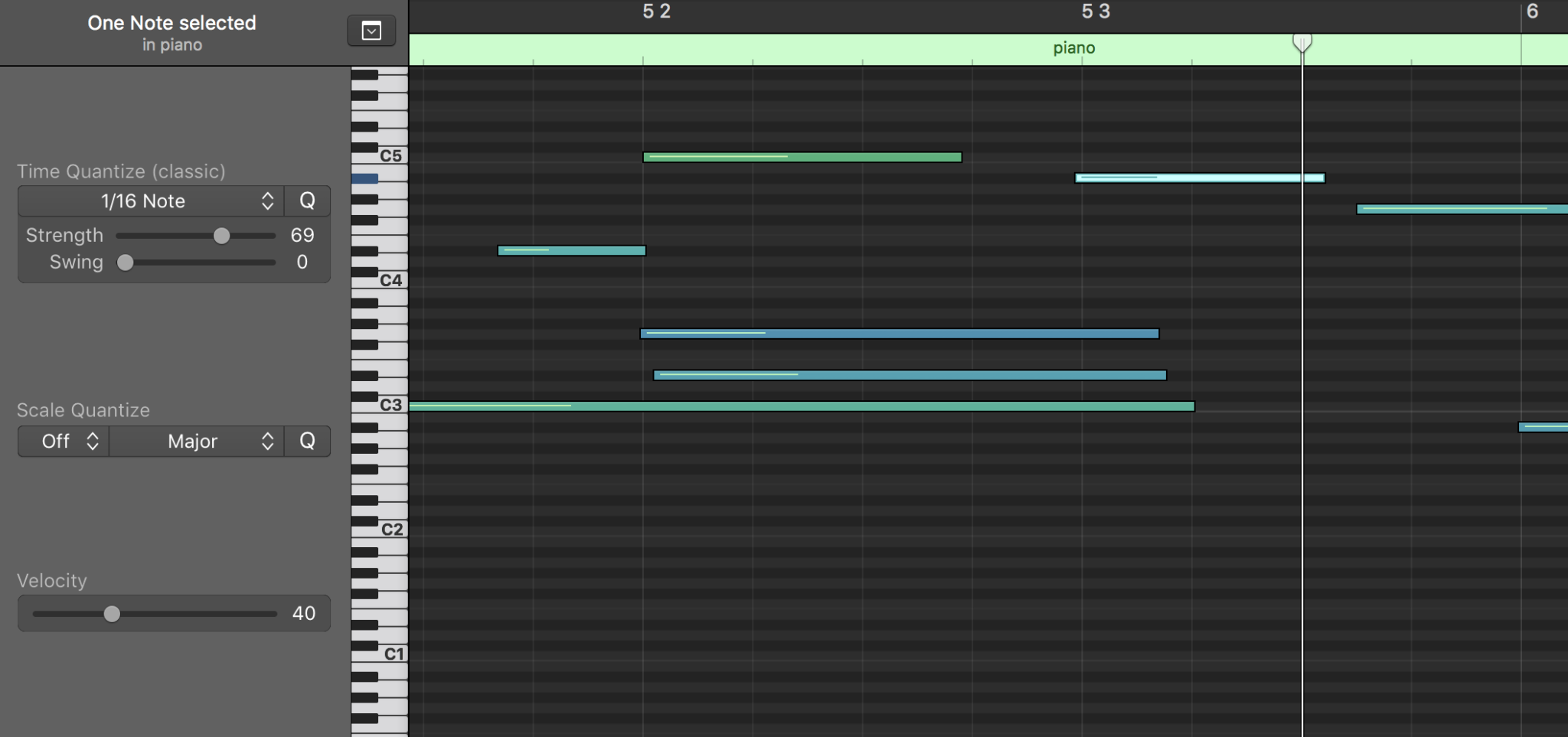
1. Record to an Even Tempo
In this case, it was 90bpm—slow enough for me to play the song with relatively few errors.
This is was hugely helpful as it made it easy to fix my timing errors with the help of Logic’s Time Quantize. It also made any changes in tempo very easy to control later.
2. Establish Pillars/Milestones
There were parts of my song that I was certain about, but other parts that were a black hole of uncertainty. To not be overwhelmed by what I didn’t know, I focused on what I did know, building pillars (parts of the song I knew I liked above all) throughout the song and setting them in my mind as milestones.
This allowed me to move from places of confidence to places of no confidence. Here’s the parts I liked:
- the opening (0:00 – 0:33)
- some of the ramp up (0:33 – 0:41)
- tender moment (1:29 – 1:47)
- ending (2:35 – 3:12)
Note: these are rough time codes as I’m referencing the finished work. When I started, I didn’t have the finished song, but only had pieces similar to the sections noted above.
3. Work in Passes
This was probably the most impactful change I made to my creative process. If I noticed something I didn’t like, I’d make a note, but keep moving forward. “Don’t worry about the mistakes, I’ll get to it in the next pass,” I’d literally say aloud to myself.
This really freed me up to focus on the end goal and not get bogged down. My goal was to finish the immediate objective, whether that be finishing the first pass of the song, fixing wrong notes, adjusting the timing of notes, or doing a pass of tempo adjustments.

Overall, however, the biggest change that helped my creative process was actually much more personal.
I found freedom.
I’ll probably do a lousy job explaining this (and maybe one day I’ll write a whole blog post on this—let me know that’s of interest to you in the comments below), but here goes.
Around the time I was trying to write Lily’s Waltz, I was in a pretty deep depression.
Burnt out and creatively frustrated, I didn’t really know what to do. I’d moved about an hour away from family and was isolated—which is what I thought I wanted: my own place to do what I wanted to do and create what I wanted to create. But soon, I started to realize that a lot of the things I thought I wanted were utterly empty.
It became apparent to me how pointless a lot of human striving is and, like a parched man in the desert, I somehow started reading Ecclesiastes—though, to be honest, it felt more like it was reading me.
“Vanity of vanities; all is vanity,” Ecclesiastes 1:2 says.
“Wow, the Bible gets it!” I said to myself. Everything I thought significant was vapor. And then, all at once, I began to encounter new songs, sermons, verses, and books that unfettered my soul. Like a symphony, I was propelled toward a powerful climactic truth: my soul longed for eternal significance.
Then, Jesus became real to me.
Then Jesus told His disciples, “If anyone would come after Me, he must deny himself and take up his cross and follow Me. For whoever wants to save his self will lose it, but whoever loses his self for My sake will find it. What will it profit a man if he gains the whole world, yet forfeits his soul? Or what can a man give in exchange for his soul?” – Matthew 16:25-26
Come to me, all you who are weary and burdened, and I will give you rest. Take my yoke upon you and learn from me, for I am gentle and humble in heart, and you will find rest for your souls. For my yoke is easy and my burden is light. – Matthew 11:28-30
It was so simple, I could give up my soul and my old self, the one that idolized (and was a slave to) material things, people, my performance, my reputation, what people thought of my work/me in exchange for freedom and my new self. It was transformative.
All of a sudden, the fears of “being good enough” and “being original” slipped away and I realized that I could just play and have fun! I had confidence that I liked what I had to say musically, and confidence that I didn’t need to meet someone else’s expectations to be able to write a song that can touch hearts. As I think about it now, a Bible verse comes to mind:
But God chose the foolish things of the world to shame the wise; God chose the weak things of the world to shame the strong. – 1 Corinthians 1:27
At some point along the road, I realize that my song didn’t have to measure up. That I’d been given exactly what I needed to accomplish the task at hand. And so, I sat down without the swirling voices of doubt and self-consciousness and what happened was truly remarkable. After months of absolutely zero progress, I basically finished writing the song in 2 days.
Note: There’s a lot more to this story, and maybe someday I can share it in its entirety. But suffice it to say this was very important in getting this piece actually made and released.
The Final Pass
Musically, there were still some minor challenges and hurdles, but honestly, once I dealt with my heart and technical process things, they were so minor and easily fixed, I don’t even remember what they were.
If you have any questions about the song or how I did something, please let me know—I’d be delighted to answer them or even to write another post that might be of additional help to you on your creative journey.
Once I got the entire piece polished up and it was ready to be exported, I decided that it needed a very subtle white noise throughout to make it feel like an actual recording.
So, with the help of this nifty tutorial, I was able to create that white noise with Logic Pro X’s built-in synthesizer, Alchemy.
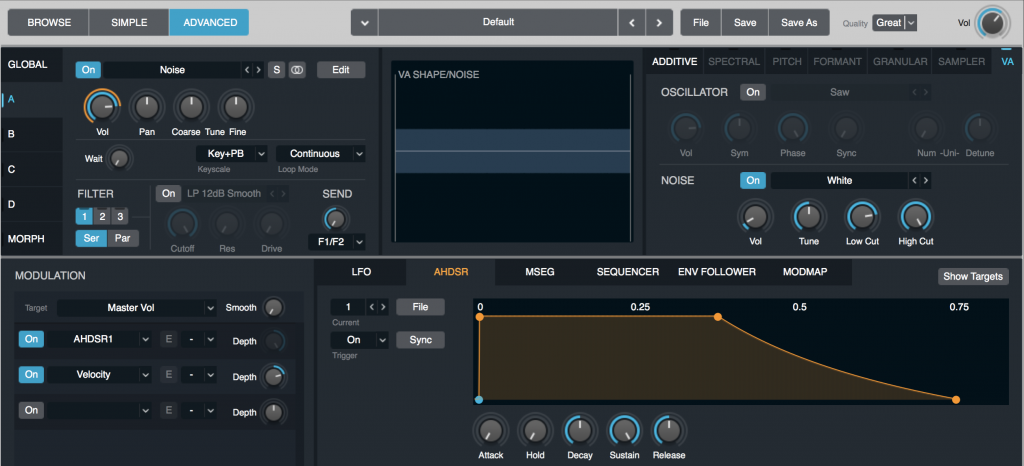
And after a bit of gain, some compression, and a billion tweaks to tempo, it was done… almost.
The Album Art
 I forgot that any single or album needs art to be recognizable, so I set myself to creating something that was emotional, but simple enough that I could create it by myself. (After months of delays, I knew I needed to release the song and didn’t want to wait on designers or feedback from others.)
I forgot that any single or album needs art to be recognizable, so I set myself to creating something that was emotional, but simple enough that I could create it by myself. (After months of delays, I knew I needed to release the song and didn’t want to wait on designers or feedback from others.)
When I thought of “Lily,” I got a couple of images, but the one that stuck in my mind was the image of a balloon just about to lift off. It seemed to capture the act of letting go that seemed to be a theme present both in my life and in the piece. So I drew the outline, brought it into photoshop, and added the red watercolor filling and the white paper background. I exported it and uploaded everything to Soundcloud.
The Sum-Up
So, if you’re reading this and wondering if you have what it takes to write a song, story, or book; or create a painting, movie, or play; I just want to encourage you to pause. Take your foot off the accelerator for a second and surrender your self, your desires, and your creations up to your creator. He created you for a purpose and he wants you to be as productive and successful as you do—if not more so.
Many thanks to my friends—shoutout to Stephen Mann and Emily Foster! They encouraged me to finish this song and get it out there.
I’ve received so much encouragement from so many people, so I’d like to pass along some of that encouragement to you. Please let me know if there’s any way I can encourage you in your creative endeavors. Just leave a comment below!SaveSave
SaveSave
SaveSave
SaveSave
SaveSave
SaveSave
SaveSave
Enjoy this post?
Subscribe and be notified the next time I release a post!
I promise I won't spam you. I can't stand spam.

